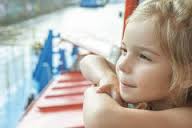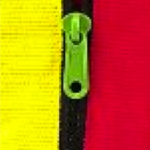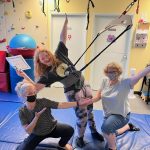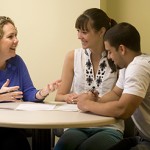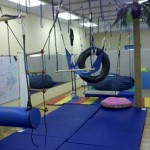We specialize in treating kids with developmental challenges.
If your child is struggling with learning, sensitivity, behavior or other issues that “don’t seem normal”, we can help. Our mission is to bring balance, harmony, and joy to parents and their children.
There are many sub types of Sensory Processing Disorder (SPD) and children commonly have symptoms in more than one area. Children with SPD often fluctuate with their symptoms and are unpredictable.
Here are some more specific red flags for specific Subtypes of SPD identified by Dr. Lucy Miller, one of the world’s premier SPD researchers:
Sensory Modulation Disorder. Subtype: Sensory Over- Responsivity
My child is bothered by:
- Sounds in large gatherings, restaurants, gymnasiums
- Appliance noises, small motor noises, dogs barking, alarms, loud unexpected sounds, and people talking while trying to concentrate
- Messy hands, glue, slimy foods, new foods, soup with meat or vegetable pieces, crumbs by mouth, food textures
- Certain fabrics,
- Having hair or nails cut
- Playing on swings, slides and being upside down (as with summersaults)
- Bright light or sunshine
- Aggressive or impulsive when overwhelmed by sensory stimulation
- Irritable, fussy, moody
- Unsociable, avoids groups, trouble forming relationships
- Excessively cautious
- Upset by transitions and unexpected changes
Sensory Modulation Disorder. Subtype: Sensory Under- Responsivity
My child:
- Does not respond when his or her name is called (must be touched to gain attention)
- Must speak loudly to gain attention
- Appears to be in own world (tuned out)
- Leaves clothing twisted on body
- Less intense response to bumping into or falling over objects
- Less intense response to messy or dirty face or hands
- Doesn’t cry when seriously hurt and not bothered by minor injuries
- Doesn’t seem to notice when someone touches him or her
- Dislikes trying new physical activities and rarely initiates them
- Prefers sedentary activities like computer time to active physical games
- Was slow or unmotivated to learn to dress or feed self
- Often seems unaware of body sensations such as hunger, hot or cold
- Is or was unaware of need to use the toilet
- Not able to use his or her hands for a task without watching them
- Doesn’t notice noxious smells or food/liquid on the lips
- Appears passive, quiet , withdrawn
- Hard to engage in conversation or other social interaction
- Lost in own fantasy world
- Apathetic or easily exhausted
- Excessively slow to respond to directions or complete assignments
- Lack inner drive to get involved in the world around , uninterested in exploring games or objects
Sensory Modulation Disorder. Subtype: Sensory Craving Pushing, pulling, and hanging off things (such as refrigerator door, parents)
- Jumping and crashing (on beds and other surfaces)
- Touching and feeling objects
- Bumping or pushing body against walls and objects
- Touching people to the point of irritating them (getting into other’s personal space)
- Making strange sounds
- Making a lot of noises during play activity
- Watching visually stimulation scenes (aquarium, spinning objects)
- Putting things in the mouth; licking, sucking, chewing or smelling non food items (hair, pencils, clothing, doorknobs)
- Constantly on the move
- Strong preference for excessive spinning, swinging, or rolling
- Seems unable to stop talking and has trouble taking turns in conversation
- Takes excessive risks during play (climbs into high trees, jumps off tall furniture)
- Loves to play music and television at extremely loud volumes
- Seeks opportunities to feel vibrations (by leaning against stereo speakers or appliances like the washer and dryer)
- Frequently fixates visually on objects such as reflections of the sun in the car’s side view mirrors
- Prefers foods with strong flavors and tastes (bitter, sour, or spicy)
- Smells or tastes objects when playing with them
- Angry or explosive when he or she is required to sit still or stop what he or she is doing
- Intense , demanding, hard to calm
- Prone to create situations others perceive as bad or dangerous
- Excessively affectionate
- Appears hyperactive
Sensory Discrimination Disorder
Has trouble with:
- Finding desired item in a drawer or on a shelf; garment in closet or shirt in drawer
- Distinguishing without looking a button from button hole, objects in pocket or drawer
- Judging if he or she is moving or if things around him or her are moving
- Judging timing and distance (difficulty catching, batting a ball, or throwing to a target)
- Judging appropriate pressure or force with pencils, markers, crayons and glue sticks (without breaking of flattening)
- Distinguishing the taste of different foods, specific sounds that are similar
- Distinguishing exactly what is touching him or her and/or where on the body
- Seating self in chair, may overshoot or sit too hard
- Identifying and distinguishing between different sounds
- Hearing what is said if there is background noise
- Finding his or her way around buildings and or other environments, difficulty following directions; gets lost easily
- Recognizing objects by their shape
- Organizing writing on a page (spacing between letters or words)
- Differentiating textures of food
- Differentiating smells
- Aversion to playing with puzzles or other visual games
- Frustration when unable to differentiate visual and auditory signals
- Needs to have directions repeated
Sensory Based Motor Disorder – Dyspraxia
My child has difficulty with:
- Gross motor skills such as learning exercise steps or routine, hopping, jumping, skipping, or running compared to peers
- Sports or games, poor skills in ball activities
- Clumsy, awkward, and /or accident prone
- Often trips or bumps into other people or things
- Learning new motor tasks
- Milestones – was slow to sit up, roll, crawl , walk and /or run
- Preference for fantasy games or talking to actually doing things
- Preference for sedentary activities rather than active play
- Fine Motor activities that require more than one step (opening a carton and then pouring a glass of milk)
- Trouble playing with manipulatives (blocks, beads)
- Fine motor skills such as drawing, coloring, coping, cutting and pasting
- Following directions that require two or three steps like Wrapping a present
- Frequently breaks toys and other objects
- Struggles with multistep assignments in school (making a collage or assembling a binder)
- Has trouble with self-care activities that require multiple steps (getting dressed, fasteners)
- Takes a long time to write things down and to do tasks that involve following a series of directions
- Has difficulty with keeping personal spaces organized (school desk or bedroom)
- Messy or sloppy eating habits
- Disheveled appearance
- Frustration when unable to complete tasks due to poor motor skills
Sensory Based Motor Disorder – Postural Disorder
My child:
- Tires easily
- Seems weaker than other children his or her age
- Has a loose grasp on objects (pencil, scissors)
- Has difficulty turning knobs or handles that require some pressure
- Avoids or needs encouragement for any heavy work (pushing, pulling , lifting)
- Has difficulty with balancing during motor activities (biking, karate, gymnastics)
- Has difficulty having adequate posture at desk/table (slumps, leans on arm, head too close to work, props head on hands)
- Unable to contract muscles and pull against another force as needed in activities such as tug-a-war
- Does not automatically move as necessary to complete physical tasks (does not shift over to catch a ball thrown to one side)
- Has difficulty using both hands at the same time (can’t use a rolling pin or roll out a ball of clay with two hands)
- Has difficulty crossing the middle of his or her body to complete a task (uses left hand to write on the left side of the paper and right to write on the right side)
- Does not consistently use the dominate hand
- Has difficulty climbing a jungle gym or dangling from a bar by the arms
- Appears lazy
- Appears unmotivated or indifferent
- Appears weak and limp
DISCLAIMER: THIS WEBSITE DOES NOT PROVIDE MEDICAL ADVICE
The information, including but not limited to, text, graphics, images and other material contained on this website are for informational purposes only. The purpose of this website is to promote broad consumer understanding and knowledge of various health topics. It is not intended to be a substitute for professional medical advice, diagnosis or treatment. Always seek the advice of your physician or other qualified health care provider with any questions you may have regarding a medical condition or treatment and before undertaking a new health care regimen, and never disregard professional medical advice or delay in seeking it because of something you have read on this website.
